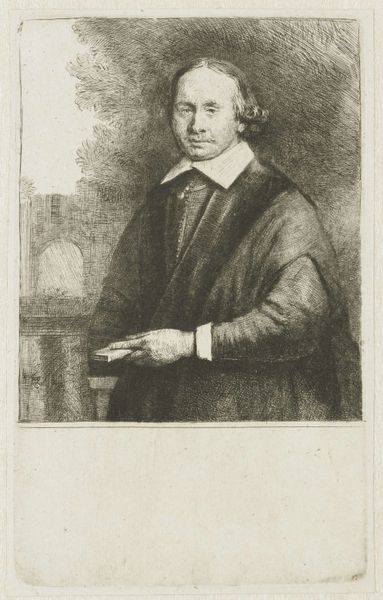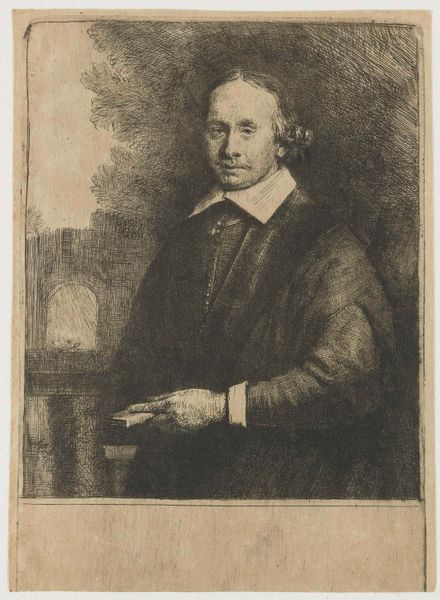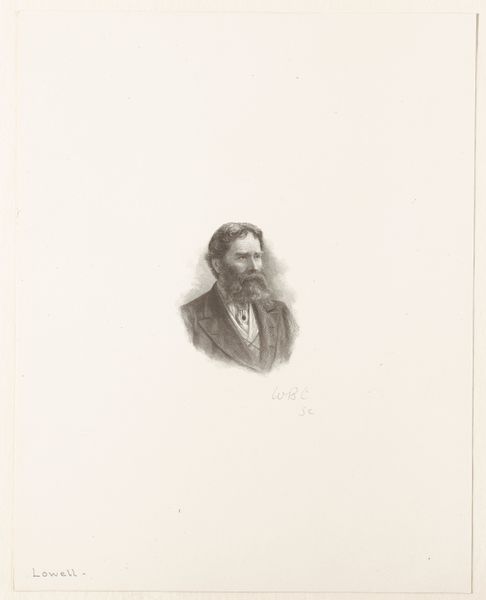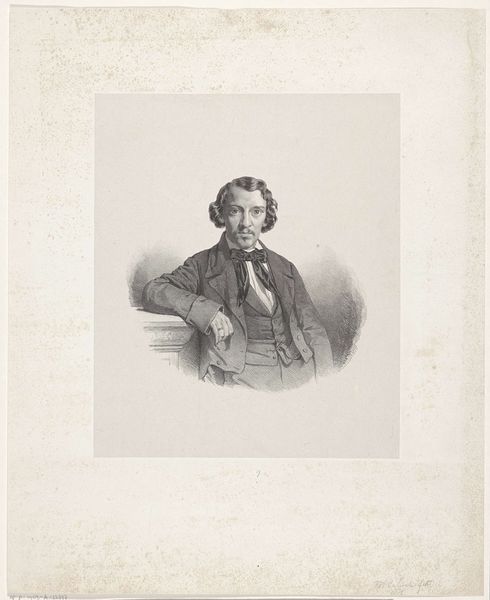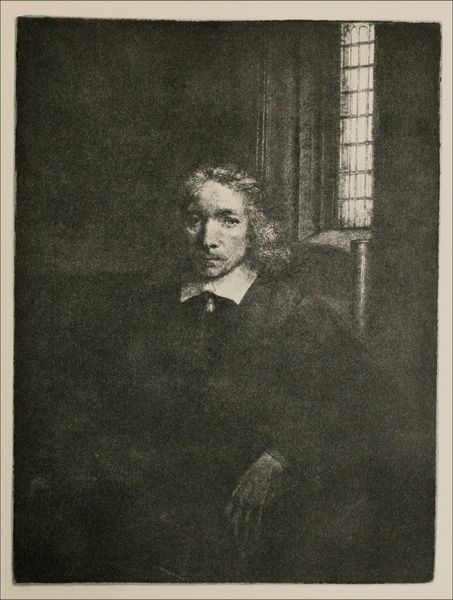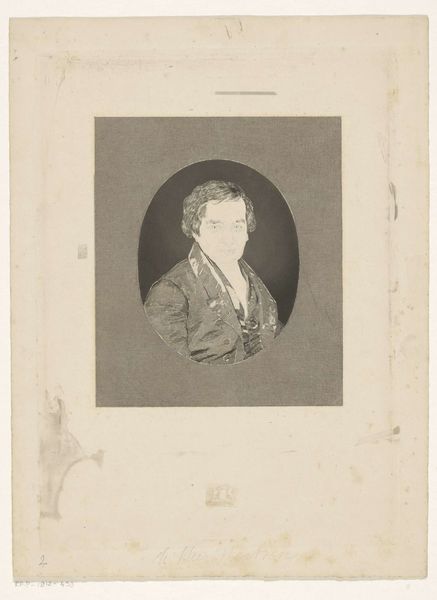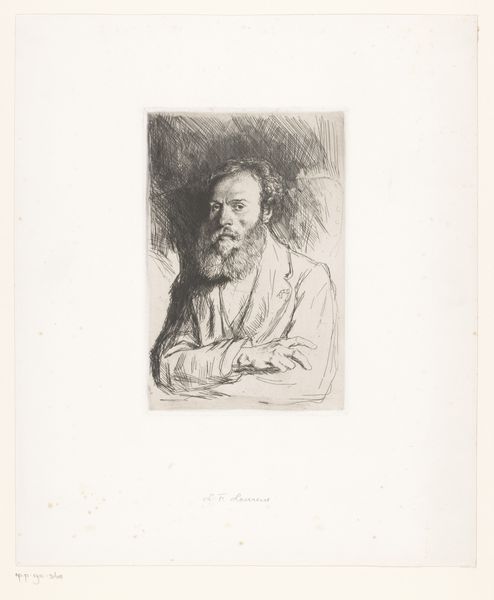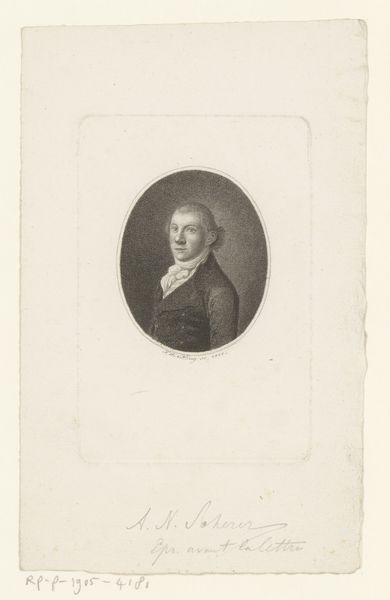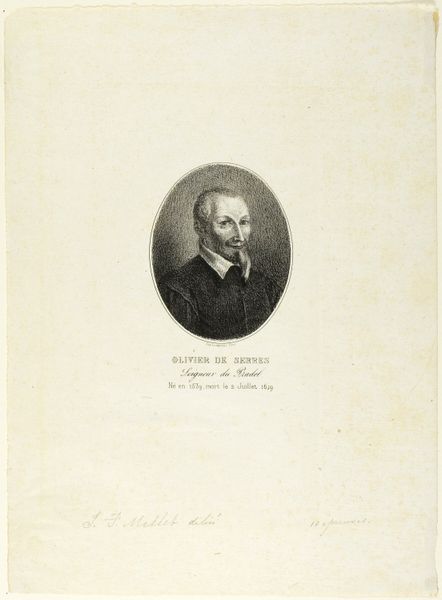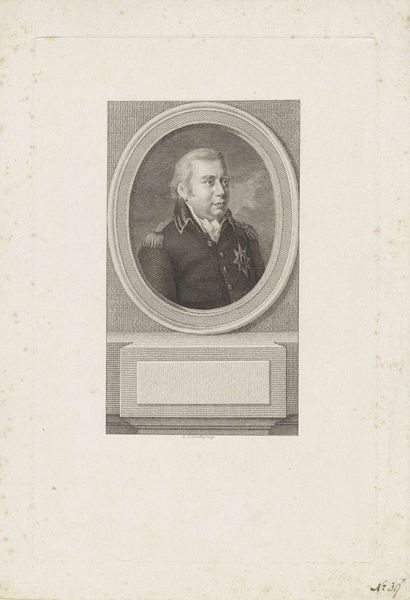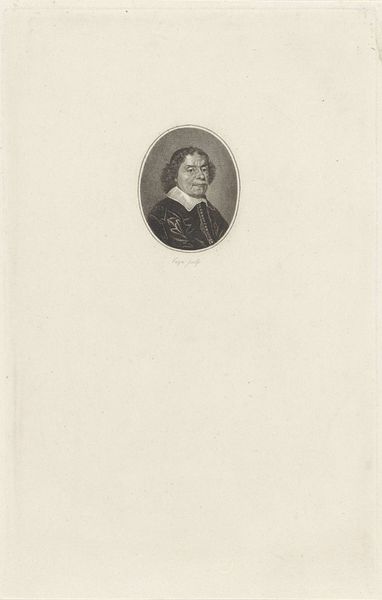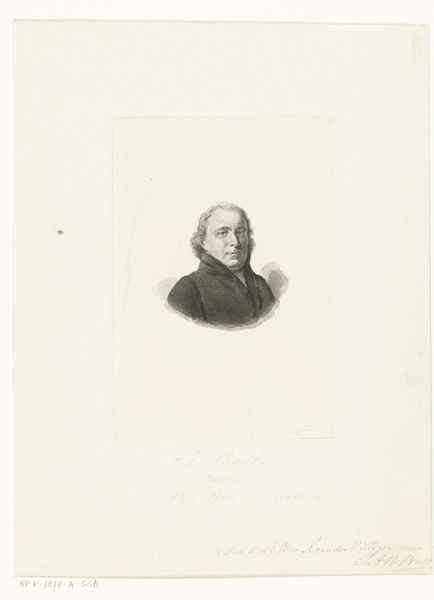
print, etching
#
portrait
#
baroque
# print
#
etching
#
history-painting
Copyright: Public domain
Rembrandt van Rijn made this undated etching of Jan Antonides van der Linden. The Dutch Republic in the 17th century saw the rise of a wealthy merchant class. People began to use their increased capital to support the arts. This etching exemplifies how art became intertwined with commerce and class. Notice that the sitter is dressed in the simple garb of a scholar. He is posed with an open book, an allegory for his scientific learning. But what is the social function of this display of status? The Dutch valued science and commerce, so to be seen as both scholarly and a successful member of the merchant class was a way for van der Linden to gain social capital in Dutch society. In my work as an art historian, I look at historical sources such as trade records, personal letters, and even household inventories to better understand the relationship between art, commerce, and social status. The meaning of art lies not just in the image itself, but in the way it reflects the values of the society that produced it.
Comments
No comments
Be the first to comment and join the conversation on the ultimate creative platform.
